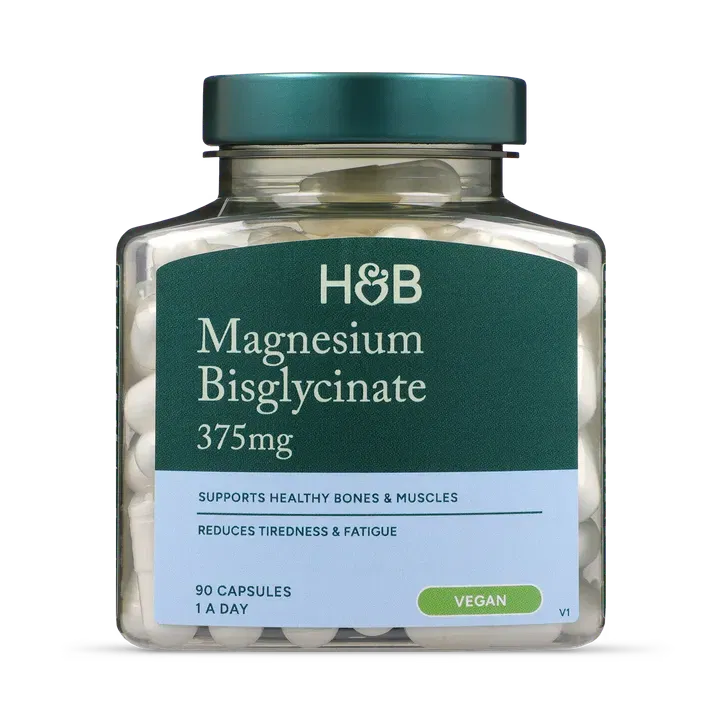Magnesium Format Comparison: What’s the Difference?
Sat, 25 October 2026

Not all magnesium supplements are created equal.
If you’ve ever wondered why one label says “magnesium citrate” while another lists “magnesium oxide” or “magnesium malate,” it’s because these forms behave differently in the body. Each type affects how well magnesium is absorbed and how it feels to take, from gentle to harsh on digestion.
In this article we'll break down the formats and explain what they are and what the differences are.
So, What Is a Magnesium Supplement Format?
When you see “magnesium citrate” or “magnesium malate,” that’s shorthand for the compound magnesium is bound to.
Magnesium on its own is a reactive mineral — it doesn’t exist in isolation. So it’s always attached to another molecule, which is known as a carrier or chelate.
This is why magnesium content is expressed as an elemental value. For example:
200 mg elemental magnesium from 1,333 mg magnesium malate (≈15% elemental magnesium).
In contrast, if a supplement simply lists “200 mg magnesium bisglycinate,” it doesn’t mean it contains 200 mg of actual magnesium. Most of that compound — typically 85% of its weight — comes from the glycine molecule it’s bound to, not the magnesium itself.
The partner molecule (like malic acid, citric acid, or glycine) also determines how well magnesium dissolves, how easily it’s absorbed through your gut, and what extra benefits it may bring. In other words, the format determines how effective the supplement really is.
Comparing Bioavailability and Tolerance
Once you know how much elemental magnesium a supplement provides, the next step is to consider how well your body can absorb it and how comfortably you can tolerate it.
Bioavailability refers to how much magnesium is actually absorbed into your bloodstream.
Tolerance describes how gentle or harsh it is on your stomach.
Magnesium oxide provides a high amount of magnesium by weight but is poorly absorbed (often ~4%) and is more likely to cause digestive discomfort or laxative effects. Organic forms like malate, citrate and bisglycinate dissolve more completely, absorb more efficiently, and are generally easier on the gut.
“Studies on the bioavailability of different magnesium salts consistently demonstrate that organic salts of magnesium (e.g., Magnesium citrate) have a higher bioavailability than inorganic salts (e.g., Magnesium oxide).”
— Review summary: Magnesium bioavailability from different salts, BioMed Central / PMC (2019)
So even if two supplements list the same milligram amount of elemental magnesium, your body may absorb very different amounts — only a small fraction from one that uses magnesium oxide, versus much more from a bioavailable form like malate, citrate, or bisglycinate.
The Four Most Common Forms of Magnesium
Scroll left to compare formats.
Absorption
Key Traits
Typical Uses
Approx. % Elemental Magnesium by Weight
Magnesium Malate
High
Bound to malic acid. Supports energy metabolism and is gentle on digestion.
Daily use, muscle recovery, fatigue support.
~15%
Magnesium Bisglycinate
High
Bound to glycine, an amino acid with calming effects. Low digestive irritation.
Sleep, relaxation, stress support.
~14%
Magnesium Citrate
High
Bound to citric acid. Well absorbed but can have a laxative effect in higher doses.
Regular supplementation, bowel regularity.
~16%
Magnesium Oxide
Low
Bound to oxygen. Poor absorption (~4%), strong laxative effect.
Often used as a laxative or low-cost filler.
~60%
Why Each Form of Magnesium Is Said to Have Unique Benefits
You might notice that certain magnesium types are marketed for specific effects, like citrate for digestion, bisglycinate for relaxation, or malate for energy. That’s not just marketing. It’s because the carrier molecule attached to magnesium can have its own physiological role in addition to the benefits of the elemental magnesium alone.
For example, malic acid (in magnesium malate) is part of the Krebs cycle, your body’s main energy-production pathway, while glycine (in magnesium bisglycinate) acts as a calming neurotransmitter that supports relaxation and sleep quality. Citrate, on the other hand, can influence acid–base balance and bowel motility, explaining its mild laxative effect at higher doses.
It is important to keep in mind that while different forms may offer additional benefits, the core effects of the elemental magnesium itself remain the same. What changes between formats is primarily absorption and tolerance, not the fundamental role of magnesium in the body.
In short, the benefits of each magnesium form come not only from the magnesium itself, but also from what it’s bound to. The carrier contributes its own functional properties.
Watch Out For Misleading Marketing or Low Quality Formats
Some supplements use magnesium oxide or blends that look good on the label: “200 mg magnesium!”, but in reality, only a small portion is absorbed by the body.
Others use clever labelling to make their products look stronger than they really are.
One of the most common examples of this is to show off the total compound weight instead of the elemental magnesium content.
A label might say “200 mg Magnesium Bisglycinate,” which sounds impressive, but bisglycinate is only about 14% magnesium by weight. That means it actually provides roughly 28 mg of real, elemental magnesium. Embarrasing.

Example of a front-of-label claim based on total compound weight
While the above label is technically accurate, it’s misleading for the average consumer comparing magnesium supplements. Even though the back of the label lists the elemental magnesium amount, most people aren’t aware of the distinction (which is why we're writing this article).
When comparing supplements, always check whether the magnesium amount refers to the elemental content (the usable magnesium) or the total compound weight. Only the elemental value reflects what your body will actually get.
And make sure to check which form of magnesium is used. If it’s mostly magnesium oxide, you’re paying for a label claim, not real absorption.
